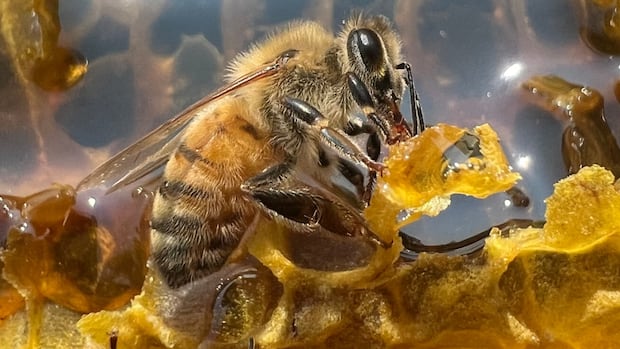Bundle up and look to the sky: It’s time for one of the best meteor showers of the year

The weather is colder and the nights are longer, which makes it a great time to look for “shooting stars.”
And this week is the peak of the annual Geminid meteor shower, one of the best shows of the year.
A major meteor shower occurs nearly every month, where we can expect anywhere from five to 150 meteors an hour, under ideal conditions.
And that’s what makes the Geminids so special: in ideal conditions, under dark skies, there could be upward of 100 to 150 meteors an hour.
We get meteor showers when Earth passes through a trail of leftover debris shed from a comet or asteroid. In the case of the Geminids, we are passing through that of an asteroid called 3200 Phaethon.
“The Geminids are an old and reliable meteor shower,” said Paul Wiegert, a professor of physics and astronomy at Western University in London, Ont.
“Its unusual consistency in following the same path is why the Geminids perform every year, as its trail of pebbles and rocks is now rather densely packed.”
Try this interactive map showing how Earth passes through the meteor shower:
The grain-sized particles — or sometimes larger — enter our atmosphere and burn up, producing the long, bright streak we see in the sky.
And the Geminids are also known for producing bright fireballs, which is another reason it is one of the most anticipated showers of the year.
How and when to see it
The shower will be at its peak on Wednesday night and early Thursday morning, though you’ll likely see some meteors in the nights before and after.
While the radiant — or the location from which the meteors appear to originate — is in the constellation Gemini, you don’t need to look in that direction to see some.
“The meteors will seem to shoot out of the constellation Gemini (hence the name) but could streak across pretty much any part of the sky,” Wiegert said. “So if you can find a dark place, with a good view of the sky in any direction, you could get a good view of the Geminids.”
The constellation will rise in the east some time after 7:30 p.m. local time. While it’s best to look for meteors when the constellation is overhead, viewers may be able to spot some “earth-grazers” — bright, slow-moving meteors that cross the sky horizontally earlier in the evening.
In order to get the most out of your viewing experience, find a dark site, preferably out of the city or town. If you can’t get away, just find the darkest place you can.
Once you’re outside, allow some time for your eyes to become adapted to the dark, preferably a half-hour or so. Stay away from your phone — its light can hinder your eyes from adapting to the dark. And remember to keep warm.
If the clouds stay away, this year will likely provide a good show, as the moon will only be illuminated roughly one per cent and won’t wash out some of the dimmer meteors.
And while it may be tempting to look away, just remember: the longer your eyes are on the sky, the more meteors you will see.
While you likely won’t see 100 to 150 meteors an hour — unless you’re one of the few who lives under ideal conditions — if the sky is clear, you’ll be in for a good show.




